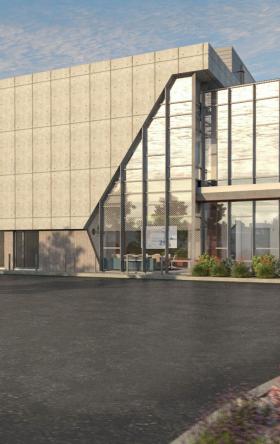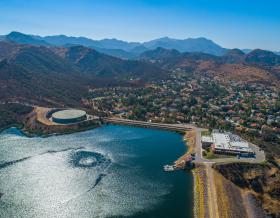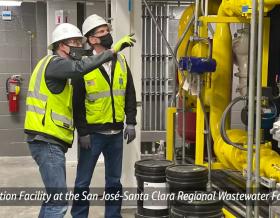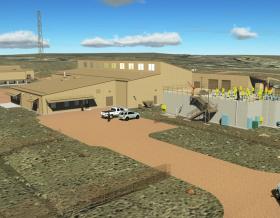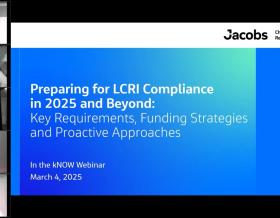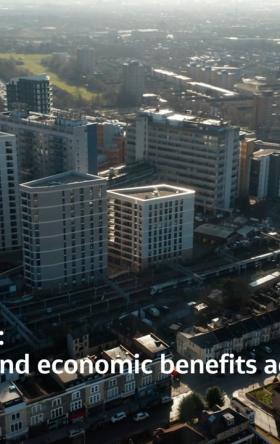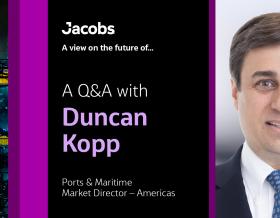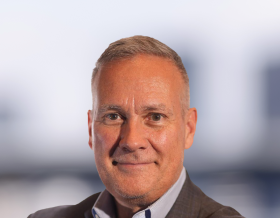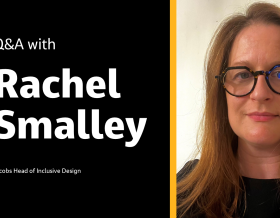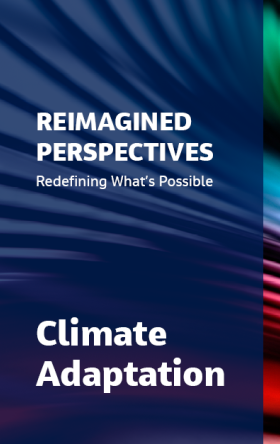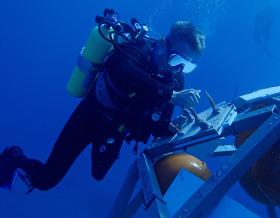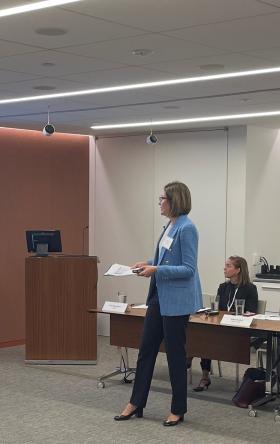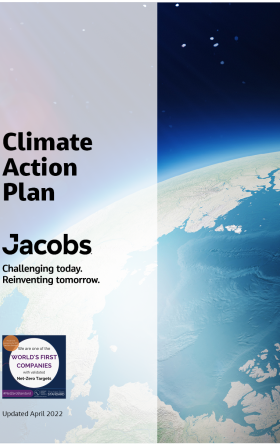1,343. That’s the current number of contaminated sites on the National Priorities List of the U.S. Environmental Protection Agency (EPA). Due to industrial-scale pollution or hazardous substances, these sites present some of the greatest risks to the health of nearby communities and the environment. They are eligible for remediation funding under the federal Superfund program.
Remediating these Superfund sites is complex. Cleanup projects are costly and can take decades. A recent Government Accountability Office report identified four factors that influence timelines: discovering new contaminants or changes in contamination, limited funding and staff, the lack of potentially responsible parties for cost sharing and technical complexity at sediment sites.
That last factor is critical. Many sites are in dense urban areas, where teams must work within constrained workspace and minimize disruption to residents and businesses. Many Superfund sites also sit in economically distressed areas that include underserved and minority communities. In 2025, U.S. EPA directed $1 billion for the cleanup of 25 Superfund sites, and according to Reuters, 75% of those sites are in historically underserved communities.
So, how do you lead an urban-based sediment remediation program to a successful outcome across a triple bottom line?
It requires overcoming the urban space and access limitations along with the physical site challenges to provide a safe, innovative program that delivers on time and within budget and engages all the right stakeholders. Getting this balancing act right can help turn a hazardous industrial site into a revitalized habitat and recreational attraction with community benefits.
Picture dirty, trash-filled canals turned into clean rivers with wildlife areas—or an old power station transformed into a data center with community facilities. Superfund remediation is helping drive major urban redevelopment in places like New York and Washington and cleaning up urban waterways and heavy industrial areas.
To help unlock these improvements at a Superfund scale, our teams combine experience from previous remediation programs with advances in technology and stakeholder engagement. Here are six proven principles from two experienced project managers.
Measure twice, cut once: the importance of preparation
While there will always be unforeseen issues and the need to flex in remediation programs, success ultimately relies on preparation. It starts with understanding the sediment, its ecotoxicity, how you will remove or cap contaminants, the chemistry involved, the pH of the soil and what additives and processes are needed for remediation. You can’t just pick treatment chemicals off the shelf and apply them. You need pilot studies, the correct modeling and a defined dosing rate — before any mud is lifted. Also, a close study of the local environment and review of nearby remediation programs can help capture hard-earned insights.
How do you move contaminated material out of tight urban spaces safely and effectively? It’s a puzzle that affects local lives and businesses, so it needs to be done carefully and with a deep level of prework. Planning must cover everything, from access through commercial properties and people’s backyards, to minimizing noise and odors. Securing access agreements with public entities or utilities can take time — in some cases more than a year — so that level of approval also requires earlier preparation and engagement.
“Besides any nearby Superfund sites and remediation work, I also look for research on nearby historical infrastructure, city and utility records, state hazardous waste documents, drainage plans — even old aerial photos. Even if some of the data conflicts, you can temper it with your own knowledge to create a much better picture of the local site.”
Share the vision and integrate local people and businesses
Stakeholder engagement is vital for sediment remediation projects, especially those that span decades. It means sharing the “why” behind the disruption and continuously emphasizing the benefits for local people and the environment. Our plan is to involve stakeholders early, be transparent and keep all stakeholders well informed.
Stakeholder engagement on Superfund sites also relies on building a strong, long-term relationship with the local municipality, coordinated with the EPA. The foundation is a clear communications program that accounts for diverse communities and languages, from signage to outreach materials across multiple media. One example: pocket-sized information cards issued to all program workers. When community members approach workers, they can share cards that outline key messages and provide contact details for official spokespeople and program ambassadors.
One key to success is using local suppliers and businesses and integrating local people into the project team. They become ambassadors who share accurate information as work progresses. Communities appreciate seeing local faces on these projects, and even trucks with local license plates and high school stickers can signal that their neighbors are active contributors to positive, long-term changes. This approach also channels income into economically distressed areas and builds collective ownership and neighborhood pride.
“Community acceptance relies on deep planning efforts done long before any boots hit the ground. It’s understanding how the quality of their lives will be affected by your work and what you can do to avoid and minimize disruption for local people and businesses.”
Include people and processes that can flex
Even with sound planning, unexpected issues will arise — supply chain constraints, funding changes, regulatory updates or extreme weather. That is when the quality of your people (including subcontractors) and processes matters. Most of the time, the goals won’t change, but the path to reach them might.
One thing that won’t change: safety routines. During implementation of the site clean-up, ensuring worker safety is the first foundation in the construction process. Teams hold regular Culture of CaringSM moments to share lessons, experiences and solutions. They also run a toolbox meeting every morning to review the day’s specific risks and challenges, including weather. These shared habits connect to a risk mitigation plan and risk register created at the start of the program to define potential risks and recommended mitigation measures. Through real-time risk mitigation, we keep the project on schedule without compromising quality.
This culture of caring and comprehensive risk mitigation plans help to safeguard project teams as well as local community members. The public's safety is always the greatest priority.
“We recorded more than one million work hours without an incident on a previous river remediation project. That was due to every team member’s ability to stop work instantly when they noticed ‘changed conditions’ — something that’s guaranteed to happen on these projects. It’s a key part of the safety culture that protects them and their colleagues.”
Technology boosts productivity, but only with the right strategy
The tools available today for sediment removal are remarkable. CAT Command is an automated, GPS-linked excavator that can be remotely piloted to handle extremely hazardous materials, work in hard-to-access areas and minimize worker risks. We've also used video calling to connect with an engineer 700 miles away to fix a leaking clamshell bucket in real time. Fixes are faster, remote help is always at hand and visual run-throughs with clients are easier.
Technology also strengthens stakeholder engagement. Social platforms help share tailored messages quickly and widely with specific audiences, but the flip side is heightened scrutiny: everything can be recorded and shared instantly.
Teams can now design and sequence work faster in 3D, 4D and even 5D (including time and schedule). Still, boots on the ground are needed to detect hidden objects in mud or salt marshes, such as old retaining walls or crossings, and to judge whether trees must be removed for access. Artificial intelligence (AI) has not solved that yet, but the potential is growing.
Relying on ‘rightsizing’ tactics and innovative treatments for constrained urban sites
Urban sediment remediation sites often lack space and access. On a river site in New York City, the working area for equipment and storage was limited, and roads were narrow and filled with traffic. Teams found new ways to store equipment and process sediment on floating barges and tailored plans so only what was needed was on site in the short term.
Another effective approach is working with contractors who have previously worked on the site or in similarly tight spaces. They know how to work safely and efficiently in small, complex environments and can spot blind spots based on prior experience.
Our teams also rely on innovative techniques in these small spaces with limited access. Two examples: in situ bioremediation (ISB) and subaqueous, in situ stabilization (ISS). Both can be applied in sediment in a more ‘surgical’ and precise way as they require less equipment, access and material than traditional sediment removal.
ISB helps by using additives or bacteria to treat contaminants where they are with minimal disturbance and ISS solidifies sediment by encapsulating the containments instead of removing it. We’ve recently proven how effective ISB and ISS can be on a Superfund site in New York City, as it heavily reduced time, cost and carbon footprint.
While it does depend on the contaminant and its concentration, ISB and ISS offer major benefits for Superfund sites, especially in tight urban spaces with limited access. At many sites, the last 10% of contaminants are the hardest to remediate because of their chemistry or location, and both tactics can help overcome these challenges.
Thinking beyond the project to benefit the community
Previous Superfund experience can offer a wide range of benefits, but one of the most powerful is being able to use prior insights to offer new community benefits. This includes creating new public spaces, facilitating community conversations, improving safety and access, or providing new resources.
One of the tools in providing this value is finding way ways to re-use sediment, depending on the contamination levels and properties. Most Superfund sediment material is too contaminated to reuse, however, there is a range of reuse opportunities we’ve found for less contaminated material. It can be mixed with reagents, such as concrete, to create low-strength construction materials or cosmetic fixtures. Stabilized sediment has been used for landfill daily cover and to work as subgrade material for recreational areas. Clean spoils can be used for filling in community parks and recreation projects. Teams have also cleaned and tested river stones and rocks to create armor stone for erosion control or to rebuild riverbanks. All of these can be used to create new public spaces or community assets.
“In a previous remediation project in New Bedford, Massachusetts, we worked with a non-profit to take their clean excavation spoils from another project and re-used 15,000 cubic yards of clean fill material in the restoration of a remediated saltmarsh. This co-operation allowed for the beneficial reuse of material from a nearby source and kept over 600 tractor trailer loads off the highway.”
The future of urban sediment remediation programs
In the complex world of urban sediment remediation, success is built on adaptability, innovation and a steadfast commitment to safety and quality .
Bioremediation and sediment reuse underscore a forward-thinking approach where restoration is paired with sustainability. The community’s interests and safety are prioritized throughout the project through thoughtful engagement. Having a program-wide risk register and safety culture that empowers anyone to act when conditions change protects both teams and communities It’s this dynamic integration of human insight, technological progress and environmental responsibility that defines successful urban sediment remediation.
Meet the authors
Joe Corrado

Joe is a program manager and vice president at Jacobs with 45 years' experience as a registered professional engineer and board-certified environmental engineer. He’s recognized for his expertise in sediment removal and has led numerous largescale initiatives focused on waterway restoration and environmental remediation.
Joshua Cummings
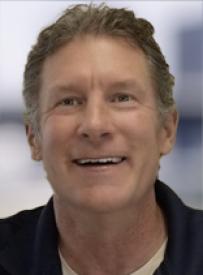
Joshua is an environmental scientist with more than 25 years of experience in Superfund remediation, including environmental dredging, wetland remediation and capping.
You might be interested in...
-
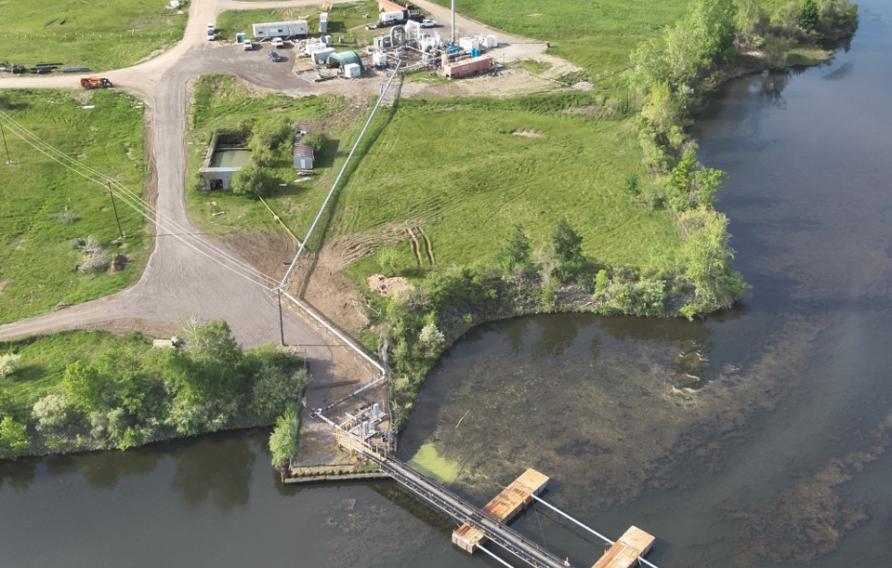 Showcase
ShowcaseVelsicol Superfund Site Remediation Program
Jacobs has worked with the U.S. Environmental Protection Agency since 1999 on the clean-up strategy, design and implementation at the Velsicol Superfund site – restoring health and safety to residents and wildlife habitats along Pine River, Michigan.
-
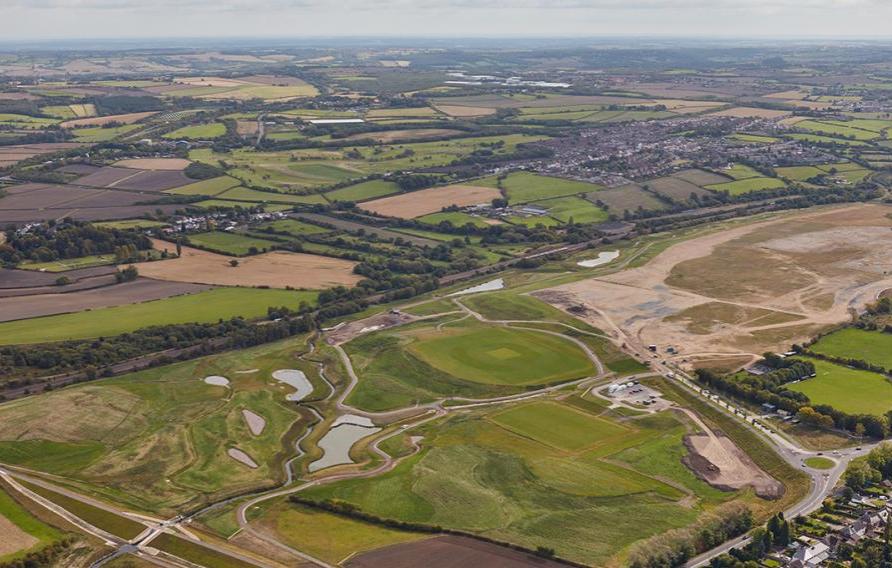 Showcase
ShowcaseAvenue Remediation and Landscaping Project
A significant and complex remediation project in the U.K.
-
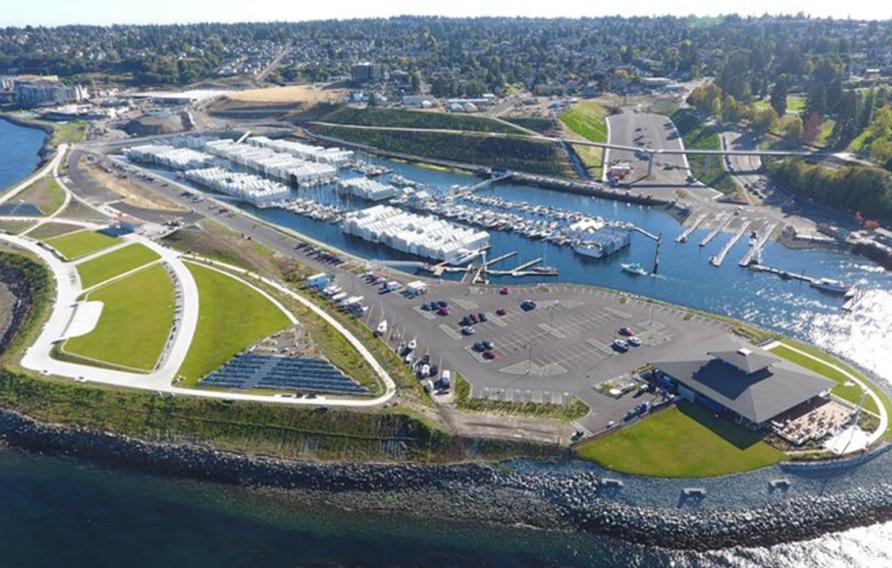 News
NewsJacobs Superfund Site Remediation Supports Metro Parks Tacoma Gold Medal Award
Metro Parks, a municipal corporation that oversees parks and recreation services in and around the City of Tacoma, Washington, was recently recognized with a Gold Medal Award for Excellence in Park and Recreation Management by the National Recreation and Park Association. From a once-marred Superfund site to an award-winning community park, discover how we helped reimagine Dune Peninsula at Point Defiance Park – a key element recognized with the award.
-
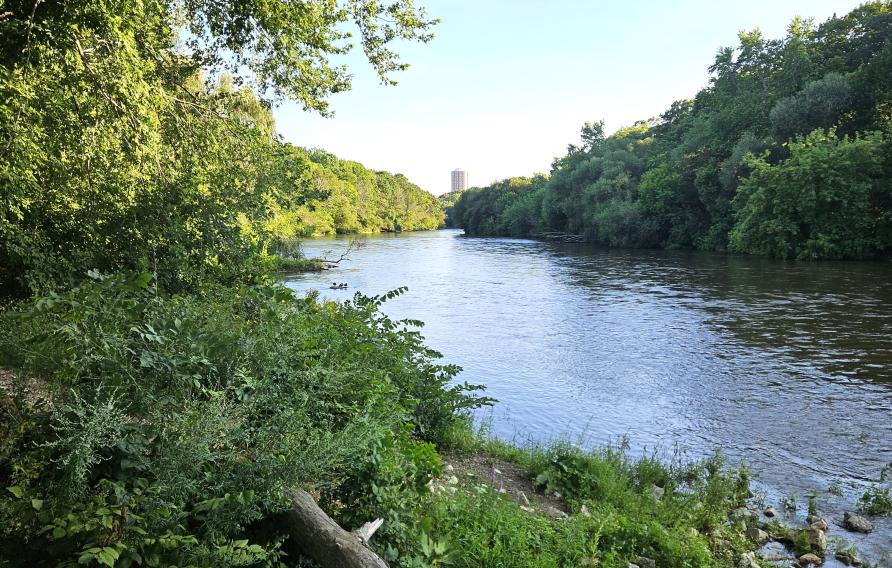 News
NewsJacobs Advances Milwaukee Estuary Cleanup with New EPA Task Order
A new remedial design task order with the U.S. Environmental Protection Agency will help Jacobs accelerate sediment cleanup, improve water quality, and restore wildlife habitat in the Milwaukee Estuary—bringing the long-polluted waterway closer to losing its Area of Concern designation.
-
 News
NewsA View on the Future of Remediation & Regeneration: A Q&A with Sharon Minchak
The work to achieve a cleaner, more resilient, sustainable and healthier society, supply chain and economy never stops — especially when it comes to remediating and regenerating our communities. In this Q&A, Sharon Minchak explores what it means to remediate and regenerate in our dynamic and rapidly changing world.
-
 Page
PageEnvironmental Market
We help the world evolve the way energy is generated, moved and used, decarbonizing even the hardest-to-change industries and enabling the crucial shift toward energy security. Whether integrating renewable sources into a nation’s electricity grid or decarbonizing industries at the backbone of society, we scale innovation so sustainable, secure energy can be a reality for more people, across the world, faster.


